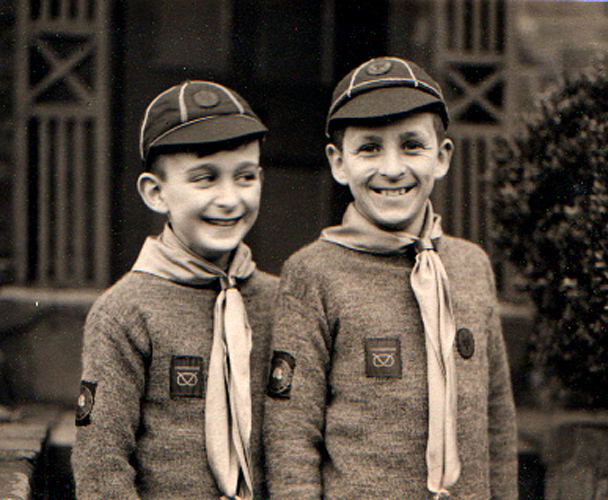Do you remember all the places and houses where you have lived? I do. Such varied and (mostly) happy memories.
I left my parents’ home in Leek (a small market town in North Staffordshire) at the beginning of October 1967, almost 19 years of age, to study at university; I only went back for short visits during vacations. Less than six years later I was headed for new adventures overseas living in Peru, Costa Rica, and the Philippines (with a break in between of 10 years back in the UK) over the next 40 years.
Early days in Congleton
I was not born in Leek however, although to all intents and purposes I consider it my home town. We moved to Leek in April 1956 from Congleton in Cheshire. I’d turned seven the previous November.
In Congleton, we lived at 13 Moody Street just a few minutes walk away from the offices and print shop of the Congleton Chronicle newspaper on the High Street where my father worked as staff photographer. No. 13 was owned by the Head family, then proprietors of the Chronicle.

It is a three-storey property. Back in the day, the attic rooms on the top floor weren’t furnished, and we used them as play rooms on wet days. On the ground floor, it seems to me that we hardly ever used the front parlor. A room, the width of the building at the rear of the house, served as dining and living room, with a kitchen and larder off to one side.

Taken in Congleton in about 1952 or so. L to R: Mike, Martin, Margaret and Edgar
 My best friend Alan Brennan, a year younger than me, lived just a few doors further up Moody Street. But we didn’t go to the same school. I was enrolled at Mossley C of E village school, a couple of miles south of the town, like my two brothers and sister before me. Each weekday morning, my elder brother Edgar (just over two years older than me) and I took the bus together from the High Street to Mossley. Sometimes, in the summer, I’d walk home on my own (something that parents wouldn’t even contemplate today).
My best friend Alan Brennan, a year younger than me, lived just a few doors further up Moody Street. But we didn’t go to the same school. I was enrolled at Mossley C of E village school, a couple of miles south of the town, like my two brothers and sister before me. Each weekday morning, my elder brother Edgar (just over two years older than me) and I took the bus together from the High Street to Mossley. Sometimes, in the summer, I’d walk home on my own (something that parents wouldn’t even contemplate today).
In the early 1950s we made our own entertainment. We didn’t have television. (In fact my parents didn’t own a B&W TV until about 1964). During the summer we’d play outside until dark, even walking the mile south to the Macclesfield Canal where we had fun on the swing bridge (now replaced by a static bridge), or hiding in the old air raid shelter near the cemetery on the way to the canal.

May Day, early 1950s. The kids of Moody Street. That’s me on the extreme left.
In the winter, we tobogganed on Priesty Fields nearby. We also had the Saturday matinee at one of the local cinemas, the Premier on Lawton Street (now demolished and the site of Congleton in Bloom Community Garden) enjoying Laurel and Hardy, or B movie westerns with the Lone Ranger, and Hopalong Cassidy, to name a few of the movie stars we emulated in our games. Happy days!
Thinking of my early years in Congleton makes me realize we did not have the luxury of central heating either in the house or at school. In fact, at home, we must have sat around a small fire in the living room to keep warm.
At school, we actually had a large coal fire in the classroom. Can you imagine? No Health and Safety Executive to put a stop to that. All that separated us from the inferno was a large fire guard. Even when I was in high school in the late 1960s each pupil was entitled to a small bottle (1/3 pint) of milk daily. I doubt that continues today. Anyway, at Mossley during the winter, we would place our frozen bottles of milk in front of the fire to thaw.

65 St Edward St, Leek
Moving to Leek
My parents decided to set up on their own in Leek, and took over an existing photographic business at 65 St Edward St, on the edge of the town center. Not an ideal location, but as an ongoing concern, I guess it was the most appropriate approach to enter the retail trade.
It was by no means a large property, for a family of six. We three brothers shared a bedroom on the front of the property (the top window in the photo on the right). My parents had their bedroom at the rear. That property didn’t have central heating either.
On the first floor was the bathroom/ toilet, and at the front of the house, an L-shaped living room. My sister Margaret (then 15) had her own private space and bed in the ‘L’ of that room. Not an ideal situation, but there was no other alternative. In July 1957 my eldest brother Martin left to join the Royal Air Force, and thereafter we saw him at home only on leave.
The kitchen was located on the ground floor, behind the shop and we ate most of our meals there, only moving to the first floor room for special family meals like Christmas. My father converted the cellar into his photographic dark room.
A side entrance led to an enclosed yard, Court No. 3, with three or four cottages, none with toilets or bathrooms, but probably just one tap of running water. These were demolished not long after we moved into No. 65, and we then had a large open space to play in.

With my best friend Geoff Sharratt (who lived at The Quiet Woman pub a few doors away) playing with my Hornby clockwork train set.

Winter fun and games with my brother Ed (center), me (crouching), and one of our friends, behind 65 St Edward St, after the cottages had been demolished.
I remember well-attended Christmas parties at No. 65, Christmas lunches around a table in the first floor living room.
Around 1960 or 1961, the lease came due on No. 65 and my parents decided not to renew the tenancy, opting to try and find a better location in the town. That took a couple more years.
In the interim, they moved the shop across St Edward St to No. 56, that was a fine porcelain retailer at the time. When we visited Leek in 2019 it was once again the premises of a photographer, and we discovered other earlier historical links.
My dad took on that fine china business, moving his photographic business there. For about six months we didn’t actually have a house. We had a room behind the shop, and a small kitchen, and a caravan on a farm a few miles north of the town. Somehow we managed, until an apartment became available at the top of the Market Place, at No. 26, above a building society.

No. 26, the red-brick building on the right at the top of the Market Place. We occupied the two upper floors.
We stayed there about two years, even over the coldest (and longest) winter I can remember, 1962/63. Everything froze and we had no running water for almost 10 weeks. Dad’s business was still operating from No. 56 St Edward St.
Then, a semi-derelict property (formerly a watchmaker’s) came on the market at No. 19 Market Place. Despite considerable trepidation on the part of my mother, Dad sold her on the idea of purchasing the property because of its central location in the town, and renovating the two upper floors into a comfortable apartment.

No. 19, with the yellow and black ‘Jackson’ sign, in between Jackson Optician (no relation) and Victoria Wine in the early 1960s. No. 26 is the building on the extreme right at the top of the Market Place.
The renovation was no easy task. There was only one tap in the property, in the cellar. No bathroom or toilet, and no central heating. These all got added and we must have moved in by late 1963, since my sister Margaret had married David by then and they took over the tenancy of No. 26.
The views over the Market Place from both No. 26 and No. 19 were great, being right in the heart of the town. Each Wednesday there was a busy market (you don’t see many of those any more, and I don’t think Leek market runs in the same way any more).

And both were great vantage points to watch the Club Day (or Walking Round Day) procession each July, which I used to take part in when a small boy.

Assembling in the Market Place on Club Day. This was taken around 1960 or so. The awning over the premises of J Cosgrove (watchmaker) is clearly seen at the top of the image. That is No. 19 Market Place before it became my father’s premises.

University days
Mum and Dad lived at No. 19 until 1976 when they retired. But I had moved out almost a decade earlier, when I headed south to study at the University of Southampton from 1967 to 1970. For the first two years I lived in South Stoneham House, one of the halls of residence just under 1¼ miles from the campus. I lived in the 16 storey tower block, not the original Queen Anne house to which it was attached. I’ve since learned that the grounds were designed by 18th century landscaper, Capability Brown. The tower was condemned for occupation in 2005, partly because of the asbestos in the building. But also the fabric of the tower (built in the 1960s) had deteriorated, and conditions for students were described as ‘squalid’.

South Stoneham House
It was due to be demolished earlier this year. This is how it looked until then, shrouded in scaffolding and plastic sheeting. Very sad. We had happy days there.

In my final year (1969-70), I moved to digs (half-board accommodation) at 30 University Road, just down from the newly-opened university administration building and bookshop on the southeast side of the campus. Within a year or so of leaving Southampton many of the houses along University Road had been bought up by the university and became annexes to university departments. No. 30 was demolished.

This is No. 28. No. 30 to its right has been demolished and stood where the trees now stand.
In September 1970, I moved to Birmingham to begin a 1-year MSc course in genetic conservation. I rented a room in a house on Portland Road in the B16 Edgbaston area of the city, and a 2 mile walk to the campus. I think it was the one on the extreme left. But it was more than 50 years ago, and many properties along Portland Road look different today.

After one year, as I started my PhD research, I joined two engineers in an apartment south of the campus on Abdon Avenue. It was certainly one of the apartments on the left of the entrance, but I don’t remember if it was the first or top floor.

I stayed there until December 1972 when I prepared to leave the UK and head to warmer climes, in Lima, Peru to join the International Potato Center (CIP) as an Associate Taxonomist.
Off to South America
Arriving in Lima at the beginning of January 1973, I lodged for about three weeks in the Pensión Beech (now demolished it seems) on Calle Los Libertadores in the San Isidro district of the city. Then I had to start looking for an apartment to rent.
I found a furnished one-bedroom apartment on the 12th floor of a tower block on Los Pinos in the Miraflores district, close to the Pacific Ocean coast. I don’t have any clear images of the building. I’m not sure it’s even still standing after 50 years. In 1973 it stood apart beside a vacant lot, and next to a Todos supermarket (long since disappeared).
Steph joined me at the beginning of July that year, and very soon we decided that the apartment was too small. We married in Miraflores in October that same year.

At our Los Pinos apartment, just after Steph arrived in Lima in July 1973.
We quickly found a furnished two-bedroom apartment on Avenida Larco just around the corner. Parking was on the first floor, accessed by a lift from the street. At street level, there was an ice cream parlor, Veinte Sabores (20 Flavors), now replaced by a commercial outlet named Mardigras.

The apartment was on the top (12th) floor, on the rear of the building with a view to the coast.


A view to the Pacific Ocean over the Miraflores rooftops.
In October 1974, the coast of Peru was hit by a major earthquake, more than 8 on the Richter Scale. Living on the 12th floor was not so comfortable then, and for many weeks there were countless aftershocks which didn’t do much for our nerves.
So by Christmas that year, we’d moved out to house-sit for several colleagues while they were on home-leave, until the following May when we were returned to the UK for six months. I had to complete the PhD residency requirements at the university and defend my thesis.
We landed in Birmingham at the end of May 1975 having returned to the UK via Panama, Costa Rica, and Mexico. We found a one-bedroom apartment in a large house on Farquhar Road close to the campus, which had been converted to about five apartments, with the owner occupying the ground floor.

The ‘bridge’ connecting the house to the garage was our bathroom.
We stayed there until the end of the year before returning to Lima, spending a few months in the CIP Guesthouse. But we didn’t remain in Peru for much longer. CIP asked me to move to Costa Rica in April 1976 to set up a potato breeding program focusing on Mexico, Central America, and the Caribbean.
Moving to North America (actually Central America)
CIP signed an agreement with CATIE, a regional research and training center in Turrialba, some 70 km east of the capital, San José. It was a campus institute, nestling below the Turrialba Volcano, and was the headquarters of the Inter-American Institute for Cooperation on Agriculture (IICA) from 1942 until 1976 (when it moved to San José).

The Turrialba volcano from the town below.
Initially, we stayed in CATIE’s guesthouse, then moved into a rather run-down house in the #109 sub-division just outside the campus before eventually moving on campus. We rented a two-bedroom detached house with a lovely garden, full of fruit trees, and the most wonderful wildlife: birds, mammals, and reptiles (some very venomous). Our elder daughter Hannah was born there in April 1978, so these were very special years we spent in Turrialba.
I don’t have any decent images of the house that we occupied until November 1980 which, after we left, became additional space for the international school nearby.

Hannah visited Costa Rica in 2002, and took these two photos of the house. The upper image shows the car port and rear door to the house (which we used as our main entrance). The lower image shows the front door and living room to the right and Hannah’s bedroom left of the door.
By the end of 1980 I was looking for a new challenge and asked CIP’s director general for a new posting. We returned to Lima and several more months in the guesthouse. In the meantime, however, I had successfully applied for a teaching and research post at the University of Birmingham. I resigned my post at CIP, and we returned to the UK in March 1981 in time for my 1 April start date at Birmingham.
We then set about finding somewhere to live. Within a week of so we had put in an offer on a house in Bromsgrove, a market town in north Worcestershire, about 13 miles south of the campus.
Back in the UK – Bromsgrove
Located just under a mile east of the town center, our three bedroom house was built in 1975. In 1982, just before our second daughter Philippa was born, we extended the kitchen on the front of the house. In 2015 we installed an electric garage door and had the front drive re-paved.

The garden was Steph’s pride and joy, that she carefully nurtured over almost 40 years.
Growing up, Hannah and Phil attended the local schools, and had a wide circle of friends living close by. The house always seemed filled with a small group of girls. And each year there were two birthday parties to organize.

Philippa’s 6th birthday party in May 1988. She is sitting facing the camera on the left, and Hannah is standing.
But that’s not the whole story. Yes, we owned No. 4 for 39 years, but for 19 of those, we lived in the Philippines, only returning to the UK in May 2010. In fact, our stay in the Philippines has been, to date, the longest continual period I have lived anywhere.
In July 1991, I accepted a position at the International Rice Research Institute (IRRI) in Los Baños, some 70 km south of Manila. From the outset we decided to keep No. 4 empty but fully furnished, which we could occupy when we returned to the UK on our annual home-leave. We thought having tenants and the like just wasn’t worth the hassle. In any case, we had a ‘bolt hole’ should our assignment in the Philippines not live up to expectations or the civil/political situation deteriorated to an extent that we might have to leave.
Asia calls
IRRI provided houses for its senior, mainly non-Filipino staff in a gated community about 10 minutes drive from the research center, across the campus of the University of the Philippines – Los Baños (UPLB). IRRI Staff Housing or ISH as it became known, was developed on the lower slopes of a dormant volcano, Mt Makiling that dominated the skyline over the town.

Mt Makiling from the IRRI Research Center.
Founded in 1959/60, the construction of the IRRI research center and housing began in 1961.

ISH takes shape in July 1961, with Laguna de Bay in the distance.

On the lower slopes of Mt Makiling, ISH takes shape in December 1961, and almost ready for occupation. Our house, No. 15, is the fourth from the bottom, middle column.
Los Baños has grown along the shore of shallow Laguna de Bay (911 km²) that stretches all the way north to Manila, a little over 65 km by road. (Click map to enlarge).
The video below (from my good friend and former IRRI colleague Gene Hettel who has retired in the Philippines near Los Baños) shows the panoramic view over the volcano and lake.
By 1991, ISH was unrecognizable from the site thirty years earlier. Mature trees covered the compound, and everywhere was lush with vegetation. The houses however, were beginning to show their age, and some of the facilities, like the kitchens had never been updated, and that remained the case for House #15 that we occupied until we left the Philippines almost 19 years later.
We had the use of a swimming pool, tennis and basketball courts, and the ISH compound was a safe place for all the children to play, often inventing their own games that were passed down from year to year over the decades. I guess an important downside of living in Los Baños was schooling for the children, most of whom attended the International School in Manila, entailing for many years a two hour journey each way, and an ungodly start time (by the end of the 1990s) of 4:30 am!
While Peru was a country of earthquakes, Costa Rica had its volcanoes, the Philippines had both of these AND typhoons. Several would sweep in from the Pacific Ocean each year and cross the country leaving a trail of destruction in their path. These images show some of the damage around ISH and the UPLB campus in the aftermath of Typhoon Milenyo in September 2006, which passed almost directly overhead, with winds approaching 150 mph.
As often as we could we’d get away to the beach, at Arthur’s Place south of Los Baños where Steph would snorkel and I would scuba dive.

8 Dec 2002: in front of Arthur’s Place
All things come to an end, and by 2009 I’d already decided not to seek another full contract, just extending my current one by a year and then retiring. We returned to the UK and our Bromsgrove home in May 2010.
 However, by the end of 2019 we had eventually decided to leave Bromsgrove and move north to Newcastle upon Tyne where our younger daughter Philippa and her family live. (Our elder daughter lives in Minnesota).
However, by the end of 2019 we had eventually decided to leave Bromsgrove and move north to Newcastle upon Tyne where our younger daughter Philippa and her family live. (Our elder daughter lives in Minnesota).
So, in January 2020, we put No. 4 on the market, just before the first Covid-19 lockdown. By the beginning of June we’d received an offer that we accepted and began making plans for the move.
We completed the sale on 30 September and moved out that same day.

The removers on their way north!

Goodbye to No. 4.
The following day we moved into a 3-bedroom detached house that we rented for the next six months in the West Allotment area of North Tyneside (east of the city center) while we looked for a new home to buy.

Move-in complete at Cloverfield by 15:55 on 1 October 2020.
We took a week to get ourselves settled and find our local bearings. But then began the search in earnest for a new home. And found just the house almost immediately, viewing it one morning and putting in an offer that same evening. The conveyancing to purchase the property was not as straightforward as we and the vendors expected, but the sale/purchase was finally completed on 15 February last year. We moved in on 6 March.

Finally settled.
Yes, finally settled. A warm, well-appointed home. Only the garden to sort out, and almost from Day 1 Steph has been busy designing, planning, and developing her new garden.

April 2021 and beyond.
And although we enjoyed living in Worcestershire, the prospect of many more treats to come in beautiful Northumberland is something we look forward to.












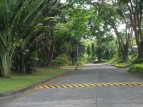



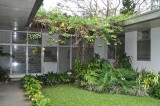



















 Isn’t it strange how random memories come to the surface when you least expect them. Especially when you wake in the middle of the night, and your mind seems to race away.
Isn’t it strange how random memories come to the surface when you least expect them. Especially when you wake in the middle of the night, and your mind seems to race away.









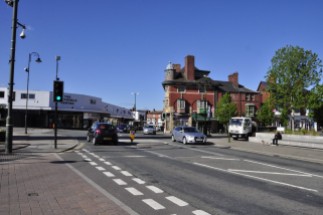


















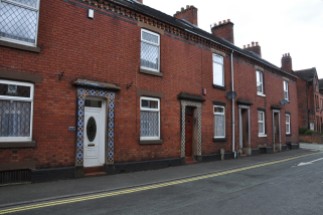







 I’ve just finished reading the novel
I’ve just finished reading the novel  18 November 1948. Today is my 70th birthday. Septuagenarian. The Biblical three score and ten (Psalm 90:10)!
18 November 1948. Today is my 70th birthday. Septuagenarian. The Biblical three score and ten (Psalm 90:10)!

































 I was also a cub scout, as was Ed.
I was also a cub scout, as was Ed.














 I passed my 11 Plus exam to attend a Roman Catholic grammar school,
I passed my 11 Plus exam to attend a Roman Catholic grammar school, 





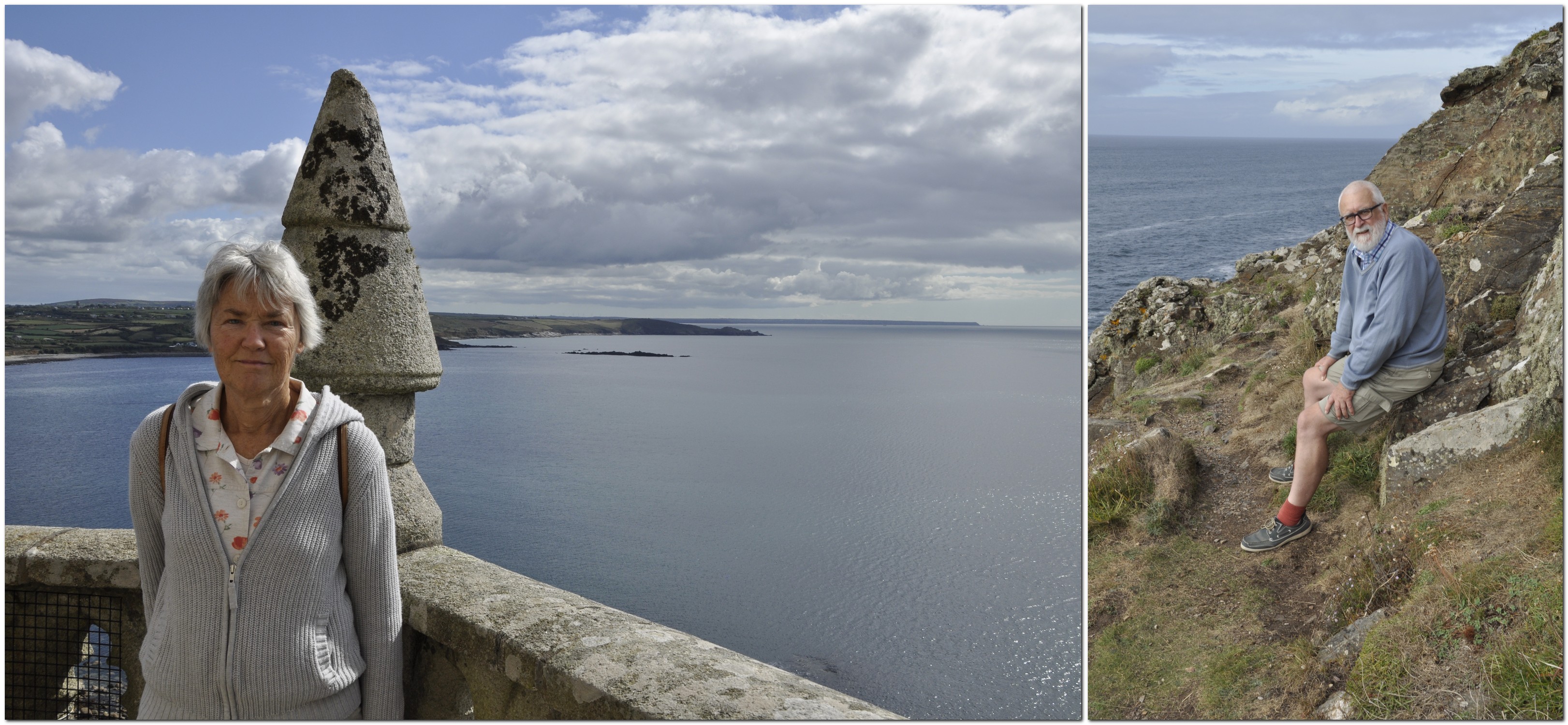

 However, I’ve had a smart phone only since May 2016. Before that I used a basic Nokia that allowed me to make calls and send SMS messages. While I was recovering from my accident in January that same year, I’d thought more about the advantages of having a smart phone, and decided to invest in one that wasn’t too expensive. I have a SIM-only plan with Talk Mobile that gives me a respectable number of text messages and calls to other phones on a monthly basis.
However, I’ve had a smart phone only since May 2016. Before that I used a basic Nokia that allowed me to make calls and send SMS messages. While I was recovering from my accident in January that same year, I’d thought more about the advantages of having a smart phone, and decided to invest in one that wasn’t too expensive. I have a SIM-only plan with Talk Mobile that gives me a respectable number of text messages and calls to other phones on a monthly basis.
 This phone, a Nokia, is not the one he used as far as I can recall, but it’s of the same sort of dimensions as that he used to haul around. How far we have come, and how much we take mobile telephony for granted. Just a few taps of the screen and you can be talking to anyone on the other side of the world.
This phone, a Nokia, is not the one he used as far as I can recall, but it’s of the same sort of dimensions as that he used to haul around. How far we have come, and how much we take mobile telephony for granted. Just a few taps of the screen and you can be talking to anyone on the other side of the world.






 Peppers sold car models made by the
Peppers sold car models made by the 


 How would Britain as a nation and British society have evolved had the 1745-46
How would Britain as a nation and British society have evolved had the 1745-46 






































